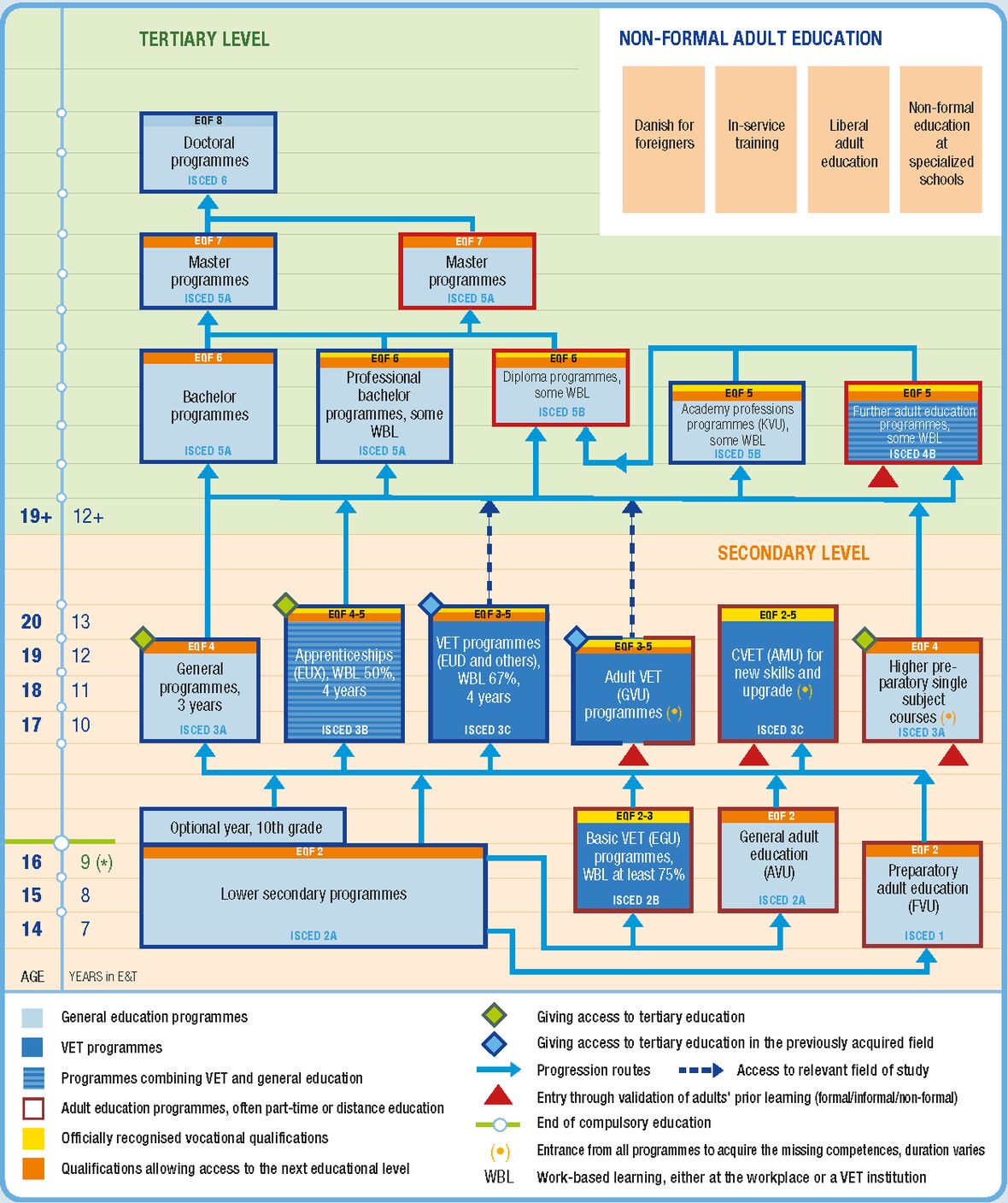Education System and VET System
Initial VET is composed of a basic programme and a main programme. The basic programme can vary from 20 to 40 weeks of education and training and is organized in four broad occupational areas which are:
- care, health and pedagogy
- office, trade and business service
- food agriculture and experiences
- technology, construction and transportation
To enter into the main programme requires successful completion of a basic programme and/or an apprenticeship contract with a company. The main programmes are organised according to a dual principle, alternating between periods of school-based learning and in-company training through apprenticeship. The duration of the main programmes is typically 3 years. Main programmes are offered at EQF level 3 (1,5 years), at EQF level 4 (3 years) and some programmes at EQF level 5 ( 5 years).
In order to complete a main programme, the student must have an apprentice contract with a company that is approved to offer training. Up to 70 pct. of a VET programme takes place in a company. All students have an individual plan that is compiled in cooperation between the VET colleges and the Local Training Committees who share the responsibility for adapting curricula to local labour market needs.
Three main pathways are offered:
- VET programmes including apprenticeship
- VET programmes including apprenticeship and general upper secondary education exam (double qualification)
- VET programmes including apprenticeship for adults beyond 25 years (shorter programmes on the basis of RPL)
All VET programmes are providing graduates access to further education and training. In the VET system, one level of qualification is providing access to the next. All VET programmes are also providing full or conditional access to higher education programmes and further adult education programmes at EQF level 5 and level EQF 6.
In Denmark, there are around 100 institutions, which are recognised providers of VET programmes at under the jurisdiction of the Ministry of Children and Education. There are over 100 main programmes leading to almost 300 different qualifications and certificates.
Figure 1 gives an overview of VET pathways and permeability in the Danish Education and training system.

Source: CEDEFOP 2019, p.11, available at: https://cumulus.cedefop.europa.eu/files/vetelib/2019/Vocational_Education_Training_Europe_Denmark_2018_Cedefop_ReferNet.pdf
CVET consists of a number of different forms of formal and non-formal types of vocationally oriented continuing education e.g. labour market training schemes and continuing professional development at a tertiary level. The CVET system contributes to maintaining and improving the vocational and professional skills and competences of the workforce, and it plays an important role in the continuing structural changes of the economy. The system offers rich opportunities for skilled workers to upgrade both their vocational and general competences over time. In addition there is a diverse offer from sector bodies, from the approved technological institutes, and from private providers.